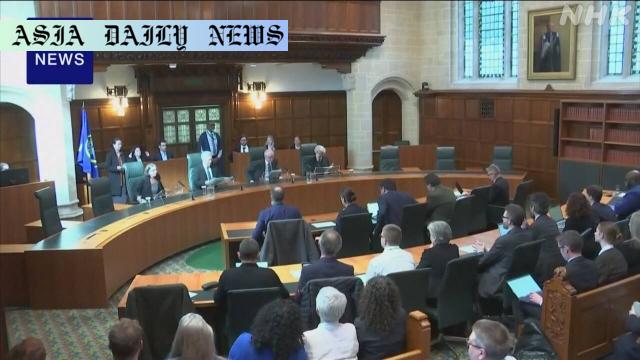UK Supreme Court rules that ‘woman’ refers to biological sex under law, protecting transgender rights but clarifying gender distinction.
The UK Supreme Court ruled that ‘woman’ is defined by biological gender under the law.
Clarifies provisions in the Equality Act regarding pregnancy and maternity.
Affirms transgender individuals are protected from discrimination.
Decision has sparked mixed reactions from advocates and groups worldwide.

The UK Supreme Court’s Historic Ruling
The UK Supreme Court has made a significant legal ruling that defines the term ‘woman’ as based on biological gender according to UK law, following a closely watched court case. The case stemmed from a 2018 decision by the Scottish government, which recognized transgender people with valid medical gender recognition certificates as women under the 2010 Equality Act. However, this decision was disputed by a women’s rights group, which argued that such recognition infringed upon women’s rights in certain contexts, such as access to single-sex spaces in schools and hospitals.
The Supreme Court’s unanimous decision clarified the definition of ‘woman’ under provisions of the Equality Act, explicitly regarding issues like pregnancy and maternity. The court stated, “These provisions can only be interpreted as referring to biological sex.” While this ruling limits the legal definition of ‘woman’ to biological terminology, the court maintained that transgender individuals remain protected under laws safeguarding against discrimination.
Impact on Future Legal Interpretations
The decision has far-reaching implications, providing a precedent for future legal cases involving the rights and recognition of transgender individuals in the UK. The clarity delivered by the Supreme Court could influence how other nations address similar legal challenges, especially regarding the balance between biological and gender identity rights.
Importantly, the ruling has sparked conversations about the evolving nature of women’s rights and gender identity. Women’s rights advocates have welcomed the decision, asserting that it ensures the protection of single-sex spaces vital to safeguarding women. On the contrary, organizations like Amnesty International have publicly condemned the ruling, characterizing it as a setback for equality and diversity.
Transgender Protections and Controversy
Despite the courts limiting the legal definition of ‘woman,’ the acknowledgment of protections for transgender individuals prevents this ruling from being perceived as entirely exclusionary. The Supreme Court explicitly reaffirmed existing legal protections against discrimination, upholding that transgender individuals retain their right to legal recognition and equal treatment.
Nonetheless, the distinction between biological and identified gender remains a lightning rod in public discourse. Some argue that biology-based legislation could marginalize gender-diverse communities. The ruling, therefore, will likely prompt ongoing activism, legal challenges, and calls for nuanced approaches to gender identity laws moving forward.
Global Implications and U.S. Connections
This case has drawn significant international attention, with parallels being drawn to recent U.S. policies. Former U.S. President Donald Trump signed an executive order in January to legally recognize only two sexes, male and female, adding fuel to debates on both sides of the Atlantic regarding the boundaries and intersections of biology, gender identity, and rights.
The UK’s ruling requires a balanced reading. While setting biological parameters, the court’s affirmation of nondiscrimination provides a legal landscape that does not outright dismiss gender-diverse identities. The ruling also emphasizes the importance of inclusive debates and policymaking to ensure fairness and dignity in diverse societies.
Commentary
A Complex Ruling Balancing Rights
The UK Supreme Court’s latest ruling on defining ‘woman’ by biological gender under UK law is a carefully considered decision that attempts to strike a balance between two competing rights. On the one hand, the judgment clarifies protections rooted in biology for women, particularly in contexts such as maternity and single-sex spaces. This is seen as necessary to uphold women’s specific rights and safety concerns, which often require biological distinctions to be respected in certain legal provisions.
Maintaining Protections for Inclusion
However, the court’s decision also underscores that transgender individuals deserve equal protection under law, even if their gender identity does not align with their biological sex. By affirming anti-discrimination safeguards for transgender people, the judgment highlights the need for compassion and recognition in an increasingly diverse society. This dual emphasis showcases the complexity of navigating biological definitions alongside evolving societal understandings of gender.
Encouraging Future Dialogue
As society continues to grapple with gender identity issues, this ruling will likely inspire further dialogue and policy innovation. Advocacy groups, legal scholars, and policymakers must work collectively to bridge gaps in understanding and provide frameworks that honor both biological and gender identity rights. This balance will ultimately shape the future of equality and social inclusion, ensuring all voices are heard while respecting diverse lived realities.


